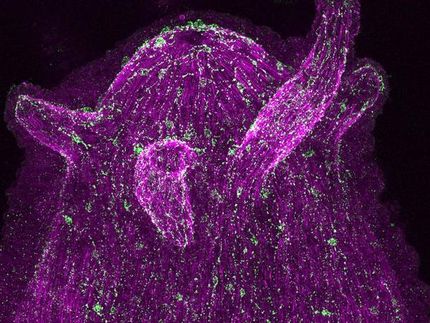UMass Amherst Researchers Discover That Microbes Can Produce Miniature Electrical Wires
Advertisement
Researchers at the University of Massachusetts Amherst have discovered a tiny biological structure that is highly electrically conductive. This breakthrough helps describe how microorganisms can clean up groundwater and produce electricity from renewable resources. It may also have applications in the emerging field of nanotechnology, which develops advanced materials and devices in extremely small dimensions.
Researchers found that the conductive structures, known as "microbial nanowires," are produced by a novel microorganism known as Geobacter . The nanowires are incredibly fine, only 3-5 nanometers in width, but quite durable and more than a thousand times long as they are wide. "Such long, thin conductive structures are unprecedented in biology," said microbiologist Derek R. Lovley. "This completely changes our concept of how microorganisms can handle electrons, and it also seems likely that microbial nanowires could be useful materials for the development of extremely small electronic devices."
Geobacter are the subject of intense investigation because they are useful agents in the bioremediation of groundwater contaminated with pollutants such as toxic and radioactive metals or petroleum. They also have the ability to convert human and animal wastes or renewable biomass into electricity. To carry out these processes, Geobacter must transfer electrons outside the cell onto metals or electrodes. This new research provides an explanation of how this can happen.
Previous studies in Lovley's laboratory demonstrated that Geobacter produces fine, hairlike structures, known as pili, on just one side of the cell. Lovley's team speculated that the pili might be miniature wires extending from the cell that would permit Geobacter to carry out its unique ability to transfer electrons outside the cell onto metals and electrodes. This was confirmed in a study in which microbiologist Gemma Ruegera teamed with physicists Mark T. Tuominen and Kevin D. McCarthy to probe the pili with an atomic force microscope. They found the pili were highly conductive. Furthermore, when Geobacter was genetically modified to prevent it from producing pili, Geobacter could no longer transfer electrons.
Another interesting implication of this research is that it suggests a mechanism for microbes to share energy in a mini-power grid. The nanowire pili of individual Geobacter often intertwine, suggesting a strategy by which Geobacter might share electricity.
Original publication: D. R. Lovley, G. Reguera, T. Mehta, J. S. Nicoll, K. D. McCarthy, M. T. Tuominen; "Extracellular Electron Transfer Via Microbial Nanowires."; Nature 2005.















































